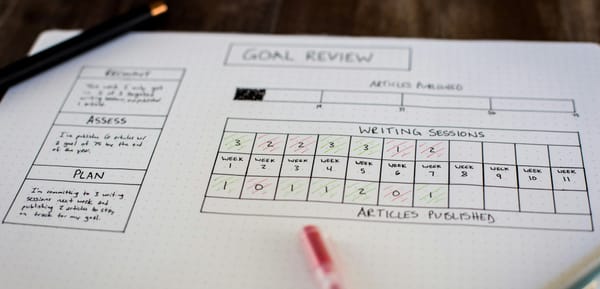Can AI Be a Mindfulness Tool? Surprising Ways It Helps You Stay Present

In a world of constant pings, pop-ups, and pressure, staying present feels like a luxury few can afford. Our phones distract us, our minds race ahead, and we find ourselves disconnected from the moment we’re in. But here’s the paradox: the same technology that often pulls us out of the now might actually help bring us back to it.
Technology is most commonly associated with efficiency, automation, or even disconnection from our humanity. But a growing number of tools are challenging that narrative by offering something unexpected: support for mindfulness. From AI companions to personalized meditation sessions, artificial intelligence is emerging as a surprisingly effective ally for staying grounded.
Let’s explore how.
What Is Mindfulness, Really?
Mindfulness isn’t just about meditation. At its core, mindfulness means being fully aware of the present moment, your thoughts, feelings, body, and surroundings—without judgment. It's the ability to observe what’s happening right now without getting swept away by it.
Research shows that regular mindfulness practice can lead to:
- Reduced stress and anxiety
- Improved emotional regulation
- Better sleep and focus
- Greater self-compassion
Yet, in the middle of busy schedules, deadlines, and mental clutter, it’s incredibly hard to slow down. And for those who struggle with anxiety or overthinking, sitting in silence with your thoughts can feel intimidating.
This is where AI-based tools can help make mindfulness more approachable—and less overwhelming.
The Rise of Digital Mindfulness Tools
Over the past decade, we’ve seen an explosion of wellness apps designed to help people meditate, track their mood, and reconnect with themselves. Platforms like Calm, Headspace, and Insight Timer brought mindfulness to the masses, with guided meditations, breathing exercises, and relaxing sounds.
Now, AI is entering the scene, bringing personalization and interactivity to the next level.
Instead of passively listening to a voice, users can now talk to an AI tool. These tools don’t just deliver content they respond, reflect, and adapt in real-time.
And this shift matters. Because mindfulness isn’t one-size-fits-all. Some people benefit from breathwork, while others need cognitive tools to ground themselves. AI can offer both and tailor them to your mood, habits, and emotional state.
How AI Can Support Mindfulness in Surprising Ways
Let’s break down some of the most powerful ways AI is helping users cultivate mindfulness in everyday life.
1. AI Companions That Encourage Self-Awareness
Chatbots like Aitherapy are trained in cognitive behavioral therapy (CBT) to help users process thoughts, emotions, and daily stressors. But they also play a mindfulness-supportive role.
How?
They ask thoughtful, simple questions like:
- “How are you feeling right now?”
- “Can you name what’s going through your mind?”
- “What’s one thing you noticed about your body today?”
These check-ins serve as interruptions—but not the annoying kind. They gently bring your attention back to yourself, your emotional landscape, and your needs.
That’s mindfulness, in action.
Even a 30-second chat can prompt meaningful reflection and help users pause the autopilot mode we often operate in.
2. Personalized Guided Meditations
AI tools can now generate or select meditations based on your current state. Feeling overwhelmed? You’ll get a calming breathwork session. Can’t sleep? It might offer a progressive body scan.
Some apps even use biometric data (like heart rate or breath patterns via wearables) to adapt sessions in real time. Others, like the Balance app, build a profile of your preferences and adjust sessions accordingly.
This personalized approach helps users stay engaged—especially those who struggle with traditional one-size-fits-all meditations.
3. Reframing Thoughts in Real Time
One of the cornerstones of CBT is catching distorted or unhelpful thoughts and reframing them. AI trained in CBT principles can do this with surprising accuracy.
Let’s say you message Aitherapy saying, “I feel like I’m failing at everything.”
Instead of offering vague advice, it might respond with:
“It sounds like you're being really hard on yourself. What would you say to a friend who felt that way?”
By prompting reflection and perspective-taking, the AI is helping users observe their thoughts without judgment—a key tenet of mindfulness.
This kind of gentle challenge helps interrupt spirals, ground the user, and bring them back to the present.
4. Mindful Nudging Without the Guilt
Unlike intrusive notifications, AI nudges can be designed to feel like gentle support. Instead of guilting you into meditating or shaming you for being distracted, they can offer simple reminders like:
- “Want to take 60 seconds to breathe?”
- “You’ve had a busy hour—want to check in?”
- “Noticing tension? Try a quick body scan.”
These prompts don’t demand perfection. They simply invite presence.
And because they can be timed to your routines or even your stress signals (with the help of wearables), they often arrive just when you need them.
Case Study: Aitherapy as a Micro-Mindfulness Tool
Let’s walk through a real example of how someone might use Aitherapy to bring mindfulness into a hectic day.
Meet Maya, a 29-year-old graphic designer. Her mornings are usually a blur of Slack messages, client calls, and cold coffee. By the time she takes a break, she’s buzzing with anxiety and self-doubt.
Instead of scrolling Instagram, she opens Aitherapy and types:
“I don’t know what’s wrong with me. I’m so anxious today.”
Aitherapy responds:
“That sounds really tough. Can we slow down for a moment? What are you feeling in your body right now?”
This one sentence is a pivot. It brings Maya out of her head and into her body. She realizes her chest feels tight, and her jaw is clenched.
The bot then offers a 2-minute breathing prompt and checks back in afterward.
Total time: 3 minutes.
Result: Maya feels calmer and more in control.
That’s the power of AI, not to fix everything, but to create space.
The Science: Is AI Mindfulness Actually Effective?
While research is still emerging, early studies show promising results.
A 2022 study in JMIR Mental Health found that users of CBT-based chatbots like Woebot reported significant reductions in anxiety and depressive symptoms after just two weeks of use.
Another study from Stanford’s Digital Mental Health Lab emphasized how digital journaling—even when guided by AI—can increase emotional insight and self-awareness, both of which are central to mindfulness.
AI can simulate empathy, mirror your emotional language, and prompt you to name and observe your inner experience. And even when it’s not human, that experience can feel humanizing.
Limitations and Honest Concerns
Of course, AI isn’t a magic solution. There are some important caveats.
- It can’t truly be mindful. AI doesn’t experience the moment—it only reflects it back to us.
- It may miss nuance. AI may misinterpret tone or context, especially if the user’s language is complex or metaphorical.
- It shouldn't replace human connection. While AI can offer support, it’s not a substitute for therapy, friendship, or community.
Another concern is over-dependence where users lean too heavily on apps instead of building internal skills. Mindfulness, ultimately, is about being with yourself.
So the goal shouldn’t be to let AI guide everything. Instead, it should serve as a bridge.
How to Use AI Mindfully
Here are a few tips to integrate AI into your mindfulness practice in healthy, helpful ways:
✅ Pick tools that promote awareness, not just productivity
Avoid apps that push constant optimization. Instead, use tools that ask how you feel and support emotional insight.
✅ Set boundaries
Use check-ins during specific times like morning journaling or wind-down routines, not 24/7.
✅ Pair AI with analog
Try combining an AI check-in with a walk outside, journaling by hand, or deep breathing away from screens.
✅ Be curious, not judgmental
If an AI suggests a new habit or reflection, explore it gently. You don’t have to “get it right.”
Final Thoughts: Mindfulness in the Age of Machines
AI doesn’t need to replace meditation cushions or yoga studios to be helpful. Its real power lies in helping you pause. Reflect. Reconnect.
The next time you feel overwhelmed or lost in your mind, a short AI check-in might bring you back to your body. A simple prompt might help you name what you’re feeling. A gentle nudge might help you remember—you’re still here.
In the age of machines, staying present isn’t about turning everything off. Sometimes, it’s about finding the right kind of support. And AI, surprisingly, might just be part of that path.
Resources and Tools Mentioned
- Aitherapy: A CBT-trained AI therapist offering 20 free messages daily. HIPAA-aligned and accessible anytime.
- Balance: AI-driven meditation app that customizes sessions based on your needs.
- Woebot: AI mental health chatbot grounded in psychological science.
- Insight Timer: Large library of guided meditations and mindfulness practices.
- Mindful.org: Education and tools for starting a mindfulness journey.





